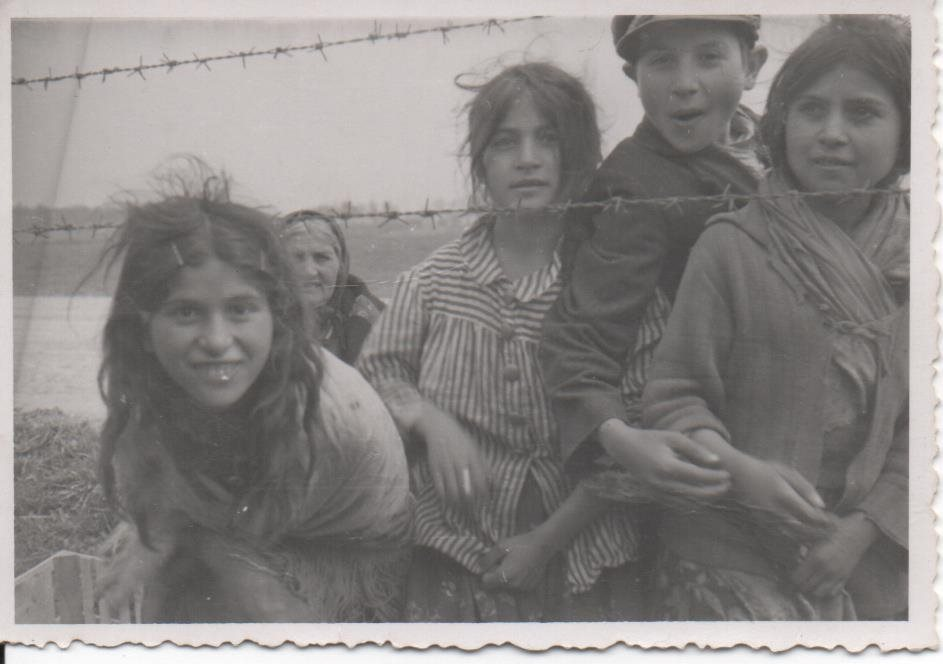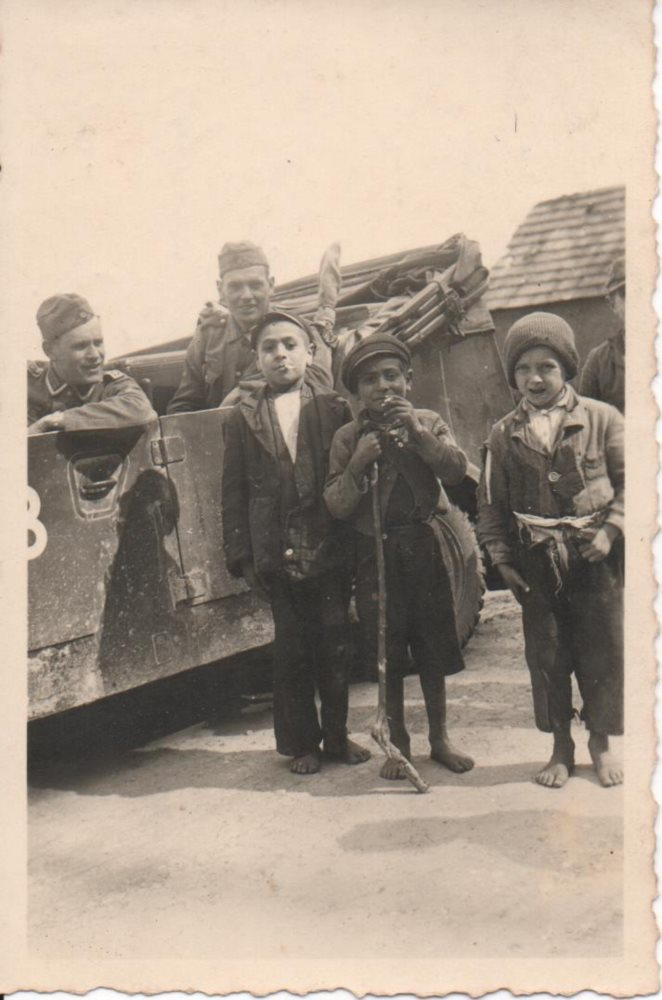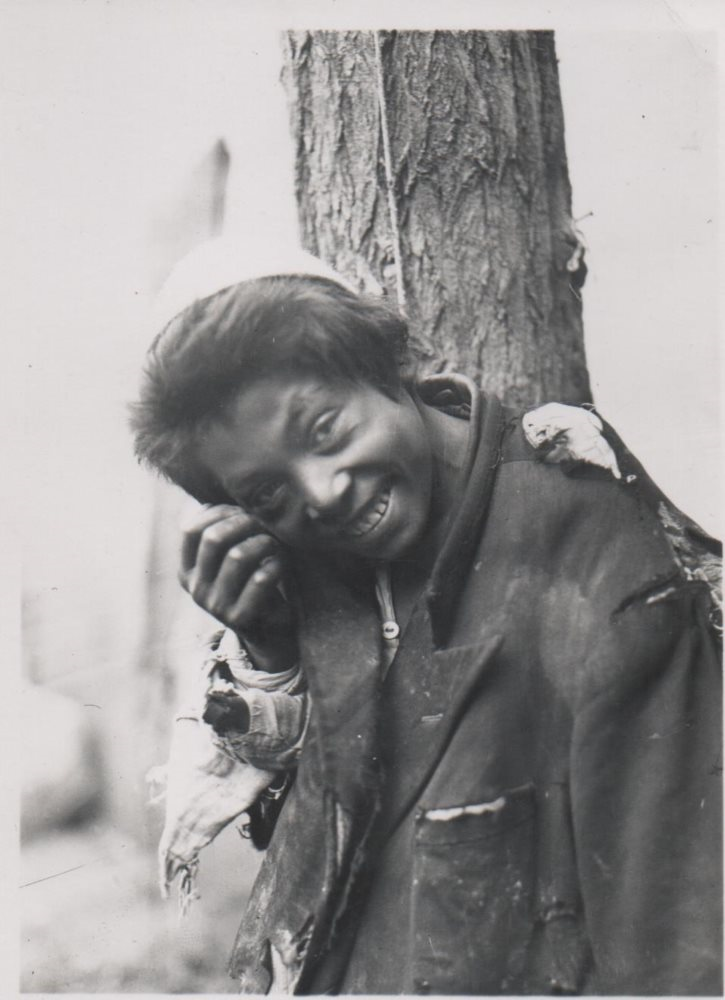“The Nazis considered the ‘Zigeuner’ […] to be a social nuisance that would spoil the pure blood of the Aryan Master-race,” says Ruth Barnett, a Jewish Holocaust survivor rescued from Germany by the British organised ‘kindertransport’. She was rescued and brought to England as a child in 1939 and fostered on a Sussex farm and now uses her experience to teach school children about difference and prejudice. Ruth says that the mass murder of between a quarter of a million and one million Roma and Sinti by the [Axis] has been “airbrushed” from many classic accounts of the Holocaust.
The newly unearthed pictures were taken by soldiers as they advanced eastward across Europe. Picture © from the Romany Collection of Robert Dawson. All rights reserved. www.robertdawson.co.uk“The Nazi attempt to wipe out all the Jews and Roma in Europe is called ‘The Shoah’ or ‘the burden’ by Jews, and ‘O Porrajmos’, or ‘the devouring’, by Roma,” says Ruth. “When the Nazis were defeated in 1945 and the camps liberated, the world was horrified to learn how the Jews had been rounded up, brutally treated, exploited as slave labour and murdered in gas chambers. There was hardly a mention of the Sinti and Roma […] who went through the same awful experiences.”
Shauna Levin, Director of René Cassin, a Jewish human rights organisation that campaigns on Roma rights and recognition, links this apparent historical amnesia to the present: “Although there are varying estimates about the exact death toll experienced by the Roma community, there is no question that Roma suffering during this time has not received enough attention,” she says. “Germany only officially recognised the Porrajmos in 1982. This is symbolic of the general reluctance to condemn anti-Roma biases that still exists today.”
The photograph of the [Axis] soldier and the Roma child come from a previously unpublished collection of what Professor Rainer Schulze, an expert on the […] ‘final solution’ and the Roma, describes as “an extremely rare historical record of encounters between German soldiers and Roma populations as the German Army invaded the Caucus and Balkan regions of Eastern Europe.”
The collection, never before seen in public, was extracted “for a considerable sum” from the “murky” and “secretive” world of private Holocaust memorabilia collectors by Roma […] heritage collector Bob Dawson. Unlike the Holocaust memorabilia collectors who keep their collections of objects and photographs under wraps, Bob Dawson has made his collection available to scholars and campaigners. The majority of Bob Dawson’s collections are now kept by Reading University and the photographs of the [Axis] soldiers with Roma are his most recent acquisition.
Picture © from the Romany Collection of Robert Dawson. All rights reserved. www.robertdawson.co.uk“You have to understand that photographs of Gypsies in World War Two are very scarce,” says Bob Dawson. “Jews might be photographed to show them ‘getting what they deserved’ are so much commoner. Nazi racial theory met a stumbling block with the Roma and Sinti as, because of their ethnic origins in Northern India, they were more ‘Aryan’ than the Germans and yet the Nazis realised that they were not Aryan in the same way as the Nordic ideal.”
Bob Dawson explains that [Axis] racial theorists, such as Hans Günther, had to find an explanation to explain “alleged racial flaws” and that the solution was to label Roma and Sinti as ‘asocial’ and distinct from Germanic Ayrans because of their mingling with “inferior races”. “Gypsyness one generation further back than Jews was fatal under Nazi racial laws,” he says. “Therefore they could be even less fit for photographing than Jews, and of course, there were not as many of them either. If you have a look at some of the collections that are for sale, many have no Gypsy photographs at all, or only occasional ones. Therefore an accumulation like this is very rare indeed.”
Picture © from the Romany Collection of Robert Dawson. All rights reserved. www.robertdawson.co.ukProfessor Schulze agrees that the photographs are a unique discovery and that up till now there were “only very few” publicly available pictures taken of such normal looking encounters between [Axis] soldiers and Roma and Sinti during the rise and fall of [the] Third Reich. Most surviving photos of Roma and Sinti are “official” photographs, explains Professor Schulze, mainly taken during Dr. Joseph Mengele's infamous medical experiments on Jewish and [Romani] children at the Auschwitz concentration and extermination camp.
“Obviously there would have been more ‘unofficial’ photographs taken by German soldiers,” he says. “But these have either been lost to the ravages of time or remain in private collections.” Professor Schulze adds that, although the pictures are almost certainly encounters between [Axis] soldiers and Roma populations in Southern Eastern Europe, it is impossible to pinpoint exactly when and where they were taken.
Picture © from the Romany Collection of Robert Dawson. All rights reserved. www.robertdawson.co.uk“Some of the captioning mentions Croatia,” says Professor Schulze, “some pictures show cattle trucks and some may be work details, deportations or even preludes to massacres, but without clear information from whoever took them, their exact provenance will remain unclear.” Bob Dawson agrees that certainties about the photographs are elusive. He has gleaned what clues [that] he can from the captioning and cataloguing of the photographs and doubts whether the original seller, whom he describes “more as an accumulator than a collector”, would have any more information to give.
“Some of the photographs had writing on the back, obviously written by the soldier concerned,” he says. “Others had been taken from albums and the seller had put labels on the back with any information present when they were in the soldier’s album. When there was original information on the back it could be very difficult to decipher and old forms of German were sometimes used.”
Capitalism in Decay
Fascism is capitalism in decay. As with anticommunism in general, the ruling class has oversimplified this phenomenon to the point of absurdity and teaches but a small fraction of its history. This is the spot for getting a serious understanding of it (from a more proletarian perspective) and collecting the facts that contemporary anticommunists are unlikely to discuss.
Posts should be relevant to either fascism or neofascism, otherwise they belong in [email protected]. If you are unsure if the subject matter is related to either, share it there instead. Off‐topic posts shall be removed.
No capitalist apologia or other anticommunism. No bigotry, including racism, misogyny, ableism, heterosexism, or xenophobia. Be respectful. This is a safe space where all comrades should feel welcome.
For our purposes, we consider early Shōwa Japan to be capitalism in decay.



